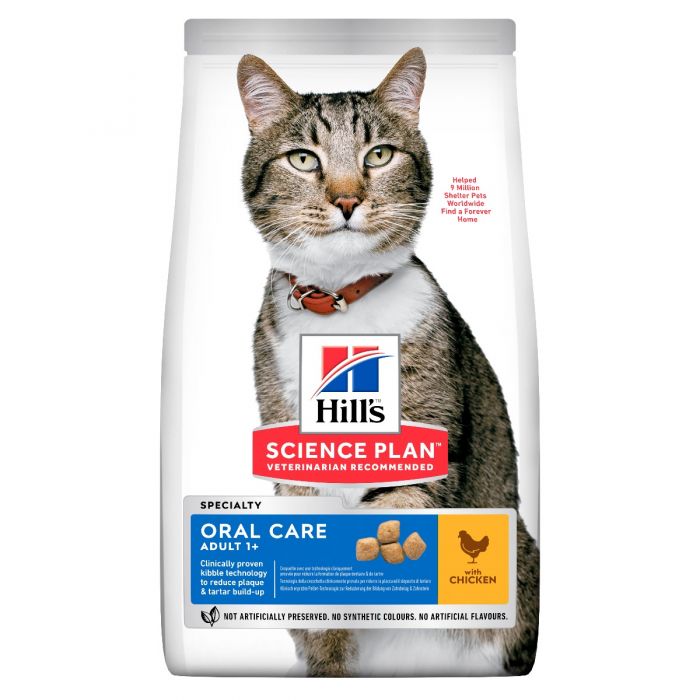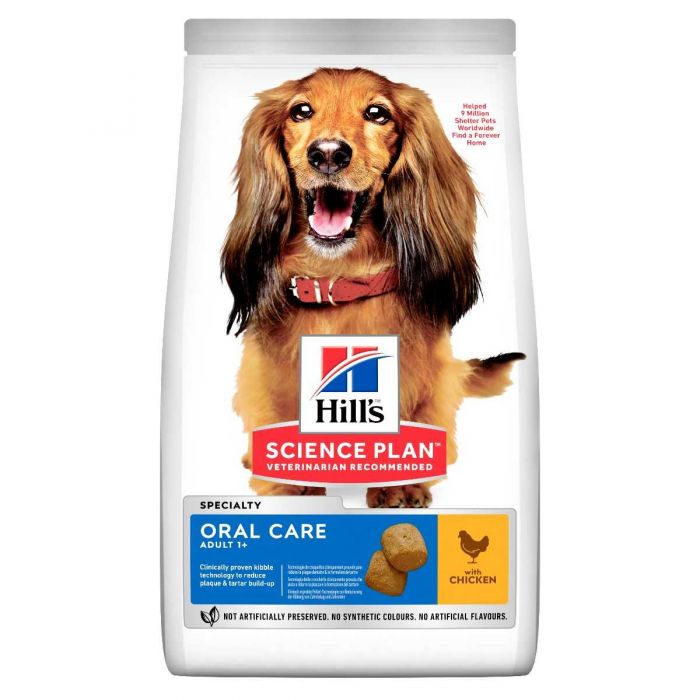
Did you know that adult dogs have 42 teeth and adult cats have 30? That’s a lot of gnashers to keep clean! Making sure your pet has good dental hygiene is important as neglected teeth can cause gum-related diseases later in life. To help you stay on top of keeping your pet’s teeth healthy, here are our top dental care tips for cats and dogs.
Signs of Poor Dental Health in Cats and Dogs
If your cat or dog exhibits any of the following symptoms, it could be a sign of tooth or gum disease. You should go and see your vet if your pet has:
- Persistent bad breath
- Sensitivity around the mouth
- Difficulty chewing food – sometimes combined with “chattering” of teeth when trying to eat
- Loose teeth
- Bleeding or inflamed gums
- Creamy/brown tartar build up on teeth
- Increased drooling (in cats)
- A loss of appetite
Keeping Your Pet’s Teeth Clean at Home
If your cat or dog is not yet showing any of the above symptoms, it’s still important to maintain a regular home-based dental care regime. You should also have an annual check-in with your vet and consider using specialist oral products to help your pets have healthy, pain-free teeth and mouths.
Brushing Your Dog or Cat’s Teeth
Just like us, brushing your pet’s teeth is the most effective way of removing plaque. Cat and dog toothbrushes have been specifically designed with soft bristles and they are shaped to fit your pet’s mouth.
It’s best to start brushing your pet’s teeth from an early age. Finger brushes are a good option to help familiarise your puppy or kitten with the sensation of brushing. Once your pet has become used to it, you should aim to brush your cat or dog’s teeth every day. Pet toothbrushes should be replaced every 4 to 6 weeks.



Top Tips for Brushing Your Cat or Dog’s Teeth
- Take it slowly. There’s no need to rush. Ultimately, you’re aiming for a stress-free time for both of you.
- Get your pet familiar with having their mouth touched. Settle down somewhere comfortable. Try to gently rub one or two teeth or gums at the same time. Build this approach up slowly. After a few sessions, your pet should start to look forward to this and you can move on to the next stage.
- Purchase a cat or dog toothpaste. To help make the job that much easier, pet toothpastes* are not only made from ingredients specifically designed for cats and dogs, but they are flavoured too. This will help to entice and encourage your pet, making it easier for you to touch their teeth. *NEVER use human toothpastes or mouth rinses on your pet. They contain ingredients that are unsuitable for your pet, and they are not designed to be swallowed but your pet is unable to spit them out.
- Brush the outside of the top set of teeth. Always brush down away from the gums so that any food is pushed out of the mouth.
- Repeat on the bottom jawline. Brush up away from the lower gum line.
- Gradually increase the number of teeth brushed. You may only be able to do a couple of front teeth at first. Once your pet relaxes and looks forward to the tasty toothpaste, you can start to brush the teeth that are further back.
- No need to rinse. Pet toothpaste is designed to be swallowed. Simply ensure your pet has access to fresh water afterwards.
Oral Rinses and Gels
Some cat and dogs will resist regular tooth brushing. If you find brushing is too stressful for them, oral rinses and gels are an easier alternative and can help slow down the build-up of plaque.


Dental Chews for Dogs
If you want to keep your dog’s teeth clean without them even realising, chews are great for daily dental protection and fresher breath. Remember that some dental chews are high in calories. If you choose to give your dog regular dental chews, reduce their normal food intake accordingly so that they don’t put on weight.

Dental Care Food for Cats and Dogs
Special dental food is another great way to keep your pet’s teeth clean with very little effort. The Hill’s Science Plan Oral Care range is clinically proven to reduce plaque and tartar, and uses interlocking fibre technology to clean teeth and freshen breath.


Dental Care Toys to Help Keep Your Pet’s Teeth Clean
Hard rubber chew toys with small bumps on will clean your pet’s teeth as they chew, helping to dislodge any food that may be residing in between. Chewing on these toys will also help to strengthen your pet’s teeth and gums.
Regular Oral Health Check-ups with Your Vet
Once your pet is over 3 years of age, it’s advisable to book regular oral health check-ups with your vet. If a dental clean-up is required, they may suggest carrying out some pre-dental checks to establish the overall health of your pet prior to booking in the procedure. The treatment will be similar to humans – tartar removal, checking for cavities, gingival (gum) pockets and removal of loose teeth.
Wrapping Up
Looking after your pet’s teeth is essential to avoiding dental problems in later life. Even if your cat or dog’s teeth seem healthy now, brushing them and using other dental products can help prevent the build-up of harmful plaque that cause problems later. To shop our full range of cat and dog dental products visit animeddirect.co.uk